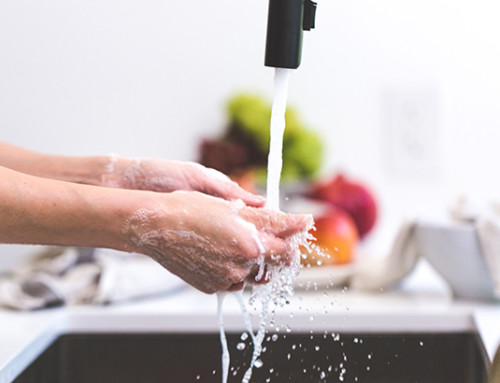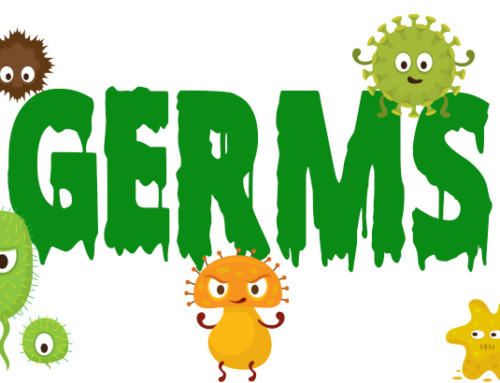When looking at our dipslides, people often ask us which one they should get. “What agar should I use?” “What does each agar grow?” “What is best for my application?” Like many of our answers to your questions, it really depends on the application and the results you are trying to achieve. But to help you make a decision, we’re going to take a closer look at each of the agars we offer. Today, we’re looking at Nutrient-TTC Agar!
A Brief History
There are many forms of Nutrient and Nutrient-TTC agar that have been modified and perfected over the years. Many dipslides contain older versions of Nutrient agar with TTC, however, our media is a more advanced and selective version.
Our Nutrient-TTC agar actually contains Tergitol-7, and is sometimes called Tergitol-7 Agar. Early on, Pollard researched the effects of Tergitol-7 on gram-positive bacteria, and later, the Tergitol-7 Agar formulation was developed by Chapman. The agar is used for selective isolation of Escherichia coli and other members of the coliform group.
According to Chapman, the medium, which contains Tergitol-7, peptone, yeast extract, lactose and bromothymol blue allows for unobstructed development of coliform bacteria, while inhibiting the growth of gram-positive organisms and gram-negative spore-formers. He also found that coliform counts on Tergitol-7 agar were 30% higher than on other similar selective media.
The peptone in the agar supplies nitrogen and mineral sources, while yeast extract provides essential vitamins. Lactose is a fermentable carbohydrate, and lactose fermentation is indicated by a color change of the pH indicator, bromothymol blue. We have frequently been asked the question, why did the normally yellow Nutrient-TTC agar turn green-blue after I inoculated it with my sample? The Nutrient-TTC agar color is normally light yellow when the agar is cast. After testing, during the incubation phase, the agar may change to a light green color. This color change is a result of either a microbial-induced or chemically-induced pH change in the media. This color change alone does not indicate the presence of microorganisms. Development of red spots or other growth on the agar are an indication of microorganisms.
In addition, Chapman later modified his formula by adding triphenyltetrazolium chloride (TTC). It was found to be helpful in quickly differentiating between E. coli and E. aerogenes. TTC helps differentiate lactose fermenters from non-lactose fermenters. Essentially, non-lactose fermenters absorb the red dye from TTC, becoming red dots on the yellow medium. Lactose fermenting organisms continue to appear as yellow greenish-yellow colonies.
Growth
 Nutrient-TTC Agar is a dull yellow color. We not only have a dipslide with Nutrient-TTC on both sides, but we also have several dipslides that have this agar in combination with another. For example, we have a dipslide with Malt agar on one side and Nutrient-TTC on the other, and a dipslide with R2A agar on one side and Nutrient-TTC on the other. These are just a few, but the different media can be very complimentary to each other. Malt, for example, supports the growth of yeasts and molds, which can be somewhat inhibited on Nutrient-TTC.
Nutrient-TTC Agar is a dull yellow color. We not only have a dipslide with Nutrient-TTC on both sides, but we also have several dipslides that have this agar in combination with another. For example, we have a dipslide with Malt agar on one side and Nutrient-TTC on the other, and a dipslide with R2A agar on one side and Nutrient-TTC on the other. These are just a few, but the different media can be very complimentary to each other. Malt, for example, supports the growth of yeasts and molds, which can be somewhat inhibited on Nutrient-TTC.
This medium is often used for food and water analysis. It is a common theme amongst many of our dipslides, as it is versatile and highly successful.
Incubation
Nutrient-TTC Agar is best incubated at 35 ± 2°C and examined for growth after 24-48 hours. Microorganisms can grow very quickly on this medium, so it is best to check after 24 hours to avoid confluent growth. If it needs to incubate longer, check again after 48 hours.
Here’s where incubation can get tricky when using a dipslide that has two uniquely different media. The optimal incubation temperature for bacterial growth (on the Nutrient-TTC agar), is 35 ± 2°C for just 24-48 hours. Yeasts and molds, on the other hand, prefer lower incubation temperature for a slightly longer period. So how should you incubate?
Well, if you’re focusing on the molds, lean more towards the lower temperature and 48 hour incubation period. If you’re focusing on the bacteria, lean more towards the higher temperature and 24 hour incubation period. If you want to focus on both simultaneously, focus on the middle of the range, somewhere around an incubation temperature of 32-33°C with a first check at 36-48 hours.
Check out our technical document for more information on our Nutrient-TTC dipslides, or to view a microbe identification chart with images of microbes grown on Nutrient-TTC agar.
That’s it for today’s micro-lesson. Hopefully, you now have a better understanding of how Nutrient-TTC agar works and what microbes it’s best used for.







Leave A Comment